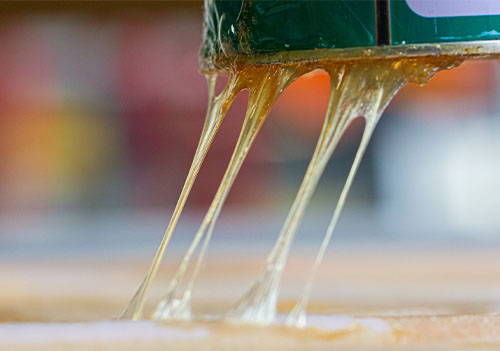NASIL® / METASILICATE
Soluble silicates
The soluble silicates in their different forms: amorphous solids, granular solids or liquid solutions, represent one of the most commonly used chemical products. Its industrial boom started in the 19th century, when ground-breaking applications in detergents, adhesives and refractory paints were developed. Its applications have been diversified today in different fields: detergents, paper, construction, paints, water treatment, industrial product raw materials; fields that cover applications both in industry and in consumer goods.
The procedures for its preparation and industrial production are based on a melting process above 1000ºC, normally from silica, in its quartz crystalline form and sodium or potassium carbonate, obtaining silicates in their amorphous solid form.
The silicate solutions, also called liquid silicates, are the mostly commonly used silicates. They are obtained in a second stage by dissolution of the amorphous solid in water at a high temperature and pressure. There are other synthesis routes for products in solution, such as the direct attack of silica with caustic soda.
Product
SODIUM METASILICATE
A solid sodium silicate with molar ratio n=1.0. It is a white, crystalline solid of granular appearance. The majority of its particles fall within the range of 0.25 mm to 2.00 mm. Given its high alkalinity, it is comes within the class of dangerous goods whose transport is regulated under ADR rules. It is used mainly in sectors such as ceramics as a basic deflocculant. It is obtained by crystallization of a sodium silicate solution with n=1.0 molar ratio. The product manufactured by Industrias Químicas del Ebro SA. is sodium metasilicate with five moles of water: Na2O SiO2 5H2O.
Markets it targets:
NASIL® C/3.35
Soluble sodium silicate presented as either an amorphous solid or liquid form with a molar ratio of 3.35. Obtained at the exit of the melting furnace during the first stage of production. It is mainly used internally as a raw material to prepare solutions.
Markets it targets:
NASIL® C/2.0
Soluble sodium silicate in the form of an amorphous solid or liquid glass with a molar ratio of 2.0. Obtained at the exit of the melting furnace during the first stage of production. Obtained at the exit of the melting furnace during the first stage of production. It is mainly used internally as a raw material to prepare solutions used to make detergents.
Markets it targets:
NASIL® 3.35
Sodium silicate solution with a weight ratio of 3.35 and average density of 1,335 g/cm3 (36º Be). It is the most widely used soluble silicate. It is used in sectors such as construction, mining, cardboard, paper, water treatment or as a raw material in numerous industrial processes for the synthesis of catalysts, zeolites and amorphous silica/silicates. It is obtained from the pressurised solution of soluble solide from the melting furnace and subsequent filtration.
Markets it targets:
NASIL® 45
Sodium silicate solution with a weight ratio of 2.0 and average density of 1.455 g/cm3 (45º Be). It is the most widely used soluble silicate in the preparation of detergents and soaps. It is also used in sectors such as ceramics, mining and water treatment. It is obtained from the pressurized dissolution of the soluble glass from the melting furnace and its subsequent adjustment and filtration.
Markets it targets:
NASIL® A52F
Sodium silicate solution with a weight ratio of 1.6 and average density of 1.565 g/cm3 (52º Be). It is the highest alkalinity soluble silicate that is not labeled as hazardous. It is mainly used in sectors such as ceramics and the preparation of detergents. It can be obtained from the pressure dissolution of soluble glass from the melting furnace and its subsequent adjustment and filtration.
Markets it targets:
OTHER SODIUM SILICATES
Silicate solutions are not products with an established formula but rather solutions in water where the quantities of nSiO2: Na2O are combined in practically any proportion. On the open market, composition limits are set by molar ratios of between n=0.5 and n=4, and by a percentage of solid content that generates non-manageable viscosities. A table is attached that lists the most representative products available from IQE. Other customized formulations can be manufactured on request.









